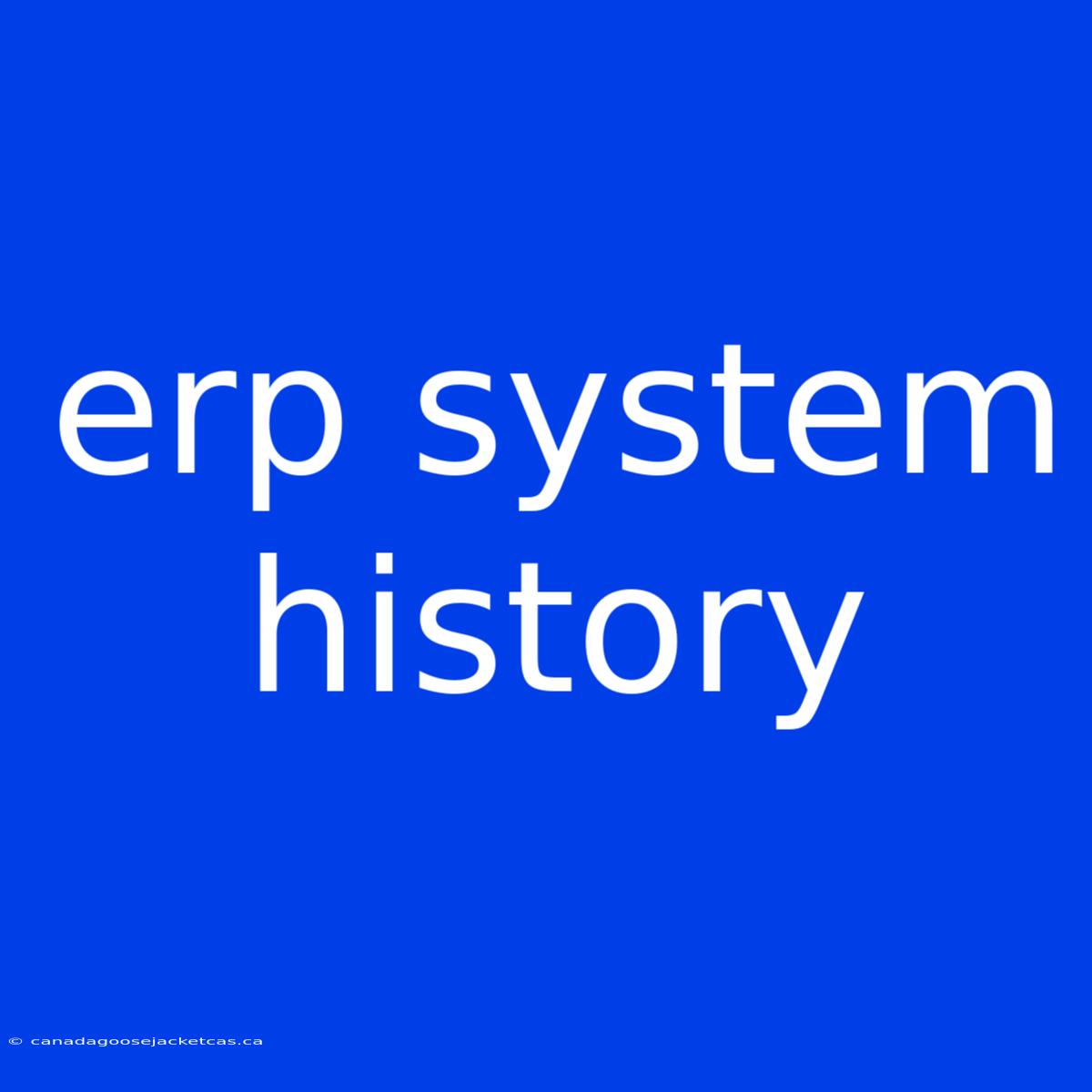The Evolution of ERP Systems: A Journey Through Time
Is the history of ERP systems a tale of technological advancement, or a story of companies struggling to keep up? ERP systems have transformed the way businesses operate, but their journey is far from straightforward. This article delves into the past, present, and future of ERP systems, revealing the key milestones and trends that shaped this crucial business technology.
Editor Note: This article explores the evolution of Enterprise Resource Planning (ERP) systems, revealing their history, impact, and future implications.
Understanding the history of ERP systems is essential for modern businesses, as it helps illuminate the challenges and opportunities inherent in adopting and implementing such systems. As the world of business grows increasingly complex and interconnected, the need for robust, integrated solutions like ERP becomes even more critical.
Analysis: This guide examines the history of ERP systems through detailed research and analysis of various sources. We trace the development of ERP from its humble beginnings to its current state, uncovering the key factors that drove its evolution.
Key Milestones in the History of ERP Systems:
| Milestone | Year | Description |
|---|---|---|
| Early MRP Systems | 1960s | Focused on material requirements planning, using computers to track inventory and production. |
| The Rise of Integrated Systems | 1970s | Software began integrating functions like accounting, inventory, and manufacturing. |
| Emergence of Client-Server Architecture | 1980s | Enabled centralized data management and improved accessibility. |
| The Birth of Modern ERP | 1990s | Rise of enterprise-wide systems like SAP R/3, Oracle Financials, and Baan. |
| Cloud Computing Revolution | 2000s | Shift towards cloud-based ERP solutions, offering scalability and accessibility. |
| Mobile Integration and AI | 2010s-Present | Integration of mobile devices and artificial intelligence for enhanced functionality and data insights. |
The Birth of Modern ERP
Early MRP Systems
The seeds of ERP were sown in the 1960s with the advent of Material Requirements Planning (MRP) systems. These early systems, initially using mainframe computers, focused on managing inventory and production processes.
Facets of Early MRP:
- Focus: Managing inventory and production.
- Technology: Mainframe computers.
- Limitations: Limited integration with other business functions.
The Rise of Integrated Systems
In the 1970s, the concept of integrated systems gained traction. Software began incorporating functions like accounting, inventory, and manufacturing, resulting in improved data flow and operational efficiency.
Facets of Integrated Systems:
- Integration: Combining various business functions.
- Efficiency: Improved data flow and operational processes.
- Challenges: Complex implementation and maintenance.
The Emergence of Client-Server Architecture
The 1980s saw the adoption of client-server architecture, a significant shift that enabled centralized data management and improved accessibility. This approach allowed users to access data and applications from different locations.
Facets of Client-Server Architecture:
- Centralized Data: Centralized data management for improved security and efficiency.
- Improved Accessibility: Users could access data and applications remotely.
- Scalability: Systems could be scaled to accommodate growing businesses.
The Modern Era of ERP
The Birth of Modern ERP
The 1990s marked the emergence of modern ERP systems. Companies like SAP, Oracle, and Baan developed comprehensive, enterprise-wide solutions that integrated numerous business functions, including finance, human resources, supply chain management, and customer relationship management.
Facets of Modern ERP:
- Comprehensive Solutions: Integrated solutions for multiple business functions.
- Enterprise-Wide Coverage: Applications spanning the entire organization.
- Improved Decision Making: Real-time data for informed business decisions.
The Cloud Computing Revolution
The 2000s saw a shift towards cloud-based ERP solutions. Cloud platforms offered scalability, affordability, and accessibility, making them attractive to businesses of all sizes.
Facets of Cloud ERP:
- Scalability: Flexible systems that can adapt to changing business needs.
- Accessibility: Accessible from anywhere with an internet connection.
- Affordability: Cost-effective solutions compared to traditional on-premise systems.
The Future of ERP
Mobile Integration and AI
The integration of mobile devices and artificial intelligence (AI) is shaping the future of ERP. Mobile access enables real-time data visibility and control, while AI provides advanced analytics and automated decision support.
Facets of Mobile Integration and AI:
- Real-time Data Access: Mobile devices provide anytime, anywhere access to key data.
- Automated Decision Support: AI algorithms provide insights and automated decision-making capabilities.
- Enhanced User Experience: Intuitive interfaces and personalized experiences for increased user engagement.
Conclusion
The history of ERP systems showcases a continuous evolution driven by advancements in technology and the ever-changing needs of businesses. From early MRP systems to modern cloud-based solutions, ERP has evolved to become a critical tool for managing complex operations and achieving strategic objectives. As businesses navigate the complexities of the digital age, the role of ERP will continue to grow, offering even more powerful capabilities for optimization, innovation, and growth.

